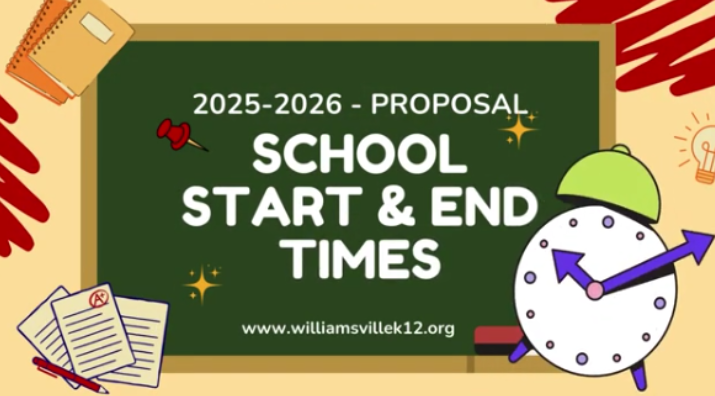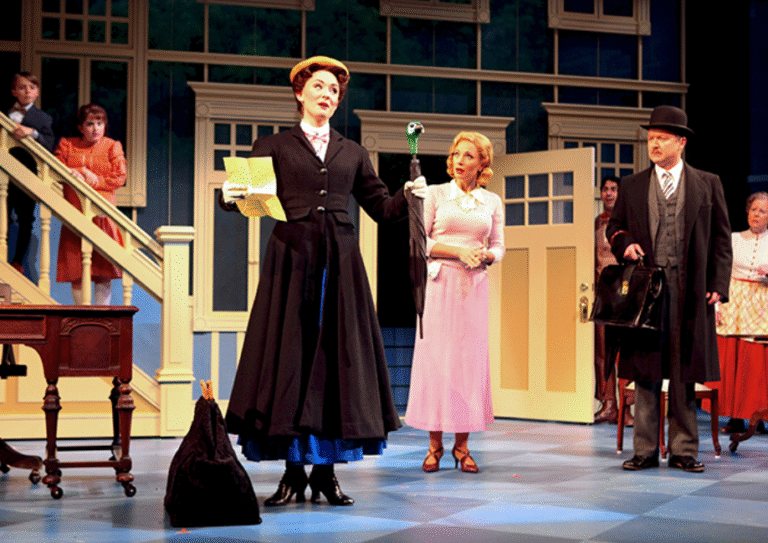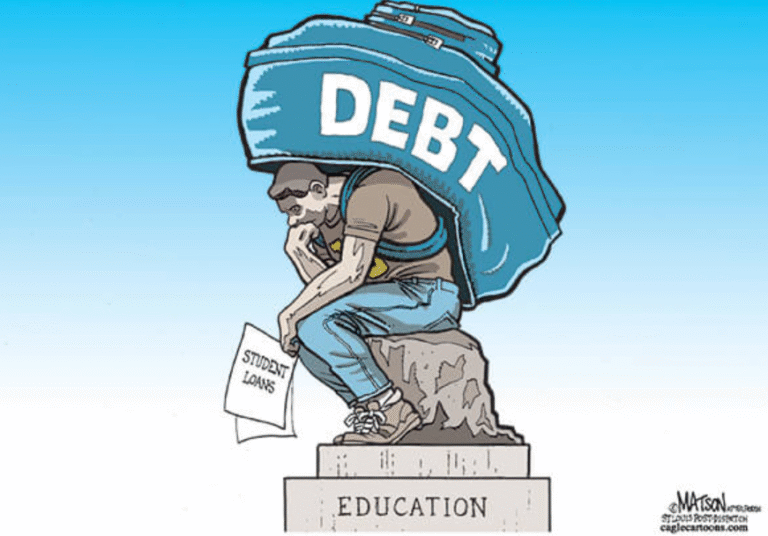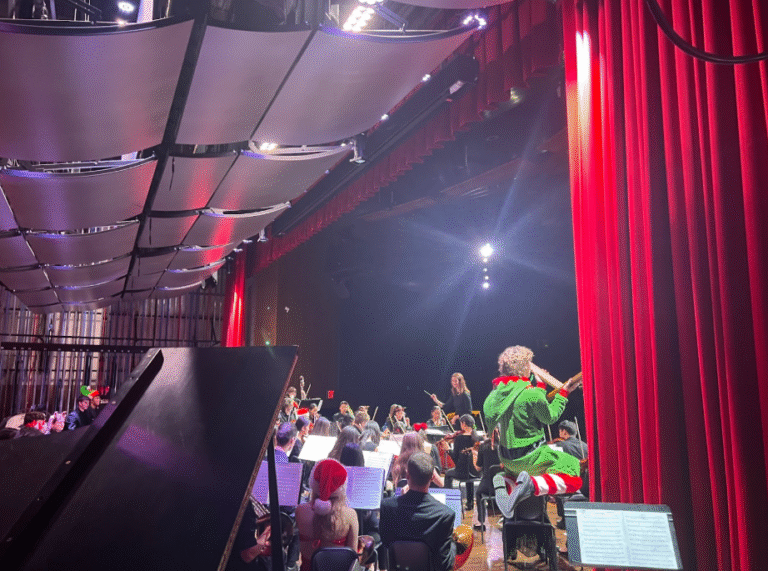By Armita Rohani
Earlier this year, on January 15th, the Williamsville Central School District published a proposal entailing the changes to school start times for the 2025-2026 academic year. The proposal (emphasis on proposal) is set to be voted on February 11th, taking into consideration both research and public response. Beginning from its announcement, parents, students, and staff alike have been juggling mixed-feelings and have been questioning whether science is the “trump card” in this situation. From abhorrent fury to expressed content, this article dives into some of those feelings that are dividing communities and creating a rift between the educational community and the school district.
Improved Academics and Attendance Are Not Backed By Science.
Research began on this matter during the Fall of 2023 and extended all the way to December 2024, and was led by a special committee that examined studies and consulted with physicians. This included the Hanover Research, which found that “Research on the relationship between school start times and student achievement is inconclusive, with different studies indicating positive, mixed, or no statistically-significant effects.” For instance, while Edwards (2012) found that having a late start time of one hour was “associated with an increase in standardized test scores,” the benefits were seen much greater for low-performing, bottom third ranking students, Hinrichs (2011) found that “school start times did not have a statistically significant effect on ACT scores or performance on state standardized tests,” across three states. The University of Minnesota College of Education and Human Development found both an “increase” and “decrease” in “Mean Core Course GPA,” indicating that “some of the statistically significant comparisons were increases whereas others were decreases.” This data is available on the district website, under the school start times page.
Moving on to attendance, although later times have decreased the percentage of tardy students, the association is not so clear for attendance. McKeever and Clark (2017) found that for 30,000 students across eight districts and seven states, “a delay in start time corresponded with a significant increase in attendance rates,” but Wolfson et al. (2007) saw that later start times had no impact on attendance, even though it did decrease tardiness. While tardiness is backed by multiple studies, attendance follows a similar uncertain pattern.
Mood, Collisions, and Sleep, However, ARE Supported by Research.
Although there are discrepancies between attendance and performance, other factors are set in stone by science. Mood, attentiveness, and behavior, all saw a positive impact, as increased student sleep resulted from the delayed start times. Furthermore, automobile accidents saw a significant decrease in automobile accidents. Danner and Philips (2008) discovered that in Kentucky, “the number of car crashes per 1,000 drivers… decreased by 16.5% in the two years following the start time change, despite rapid population growth in the area.”
Faults and Inconsistencies Within the Proposal.
The proposal has seen much push-back from the general population for a myriad of reasons, and the inconsistencies of the district’s own plans is not helping their cause. For instance, the Centers for Disease Control and Prevention (CDC) and American Academy of Pediatrics (AAP) both recommend that adolescents start at “8:30 A.M. or Later,” and although the high schools are starting at 8:50, the middle schools are starting at 8:20 a.m, ten minutes before the recommended start times. When one factors transportation, and the process of getting ready for school, middle schoolers would be receiving much less sleep than what is recommended by the AAP. The Elementary schedule faces a similar dilemma–adjusting start times for convenience (the FAQ page on the district website reads, “adjusting the middle and high school start and end times would also require an adjustment at the elementary level to accommodate for transportation”) . The discrepancies between children that attend Country Parkway and Maple West include a start time 30 minutes later than for students who attend Dodge, Heim, Forest, and Maple East (8:20 am vs 7:50 am).
While I was researching this, I noticed that whenever the district refers to “studies” and “research,” they never specify which study they are pulling from. In this topic, different studies have different findings, so the lack of specificity is a bit odd. To be clear, multiple papers and dozens of studies have been made available to the public on the district website. It is the “collectivity” of the studies that I find strange.
The Problems With Science: Lack of Consistency.
Different studies have been coming up with different findings, so incorporating evidence from all of these studies is difficult. Different districts, states, and counties saw variable effects on the shifting start times. When some schools embraced later start times, they found a much more positive effect than other neighboring districts—and even neighboring states. Based on academics alone–the start times are not as consistent as one would hope during such great stakes.
Confounding Variables: Extracurriculars, Homework, Jobs, and Our Future.
As a senior in high school, this is based on what I have seen throughout my peers, and possible confounding factors that neither the studies or district have addressed.
Compared to 2:45 p.m., 3:40 p.m. is late. In fact, most people who are involved in afterschool clubs like Newspaper, Earthwise, French Club, have either gone home or are being picked up. After-school athletics are well underway, and Drama Club gets to go home by 6pm (at least, for non-tech week days). Push that by about an hour. Club attendance will more than likely plummet because of sports attendance and parental pickup–in fact Newspaper club may not even run next year (stay tuned for that). The time students who are involved in extracurriculars get back home by is significantly pushed back. This will significantly reduce after-school involvement, and for students who have a passion for such activities, reducing or even removing them from their lives can negatively impact their mental health. A problem that later-start times is supposed to improve, not diminish. Did these studies explore how extracurriculars would be impacted? If not, did the district consider these implications?
Later release times also negatively impact outside-of-school activities. Whether a student volunteers for a local shelter, attends community meetings and events, conducts research, or participates in club sports, their ability to become involved in those activities diminishes. Just because a school’s timetable changes, doesn’t mean the entire community’s will. Although the district is collaborating with afterschool programs like childcare facilities, they have not yet addressed the complications with non-school-sponsored extracurricular activities. Decreased involvement outside of school can alienate students from their communities, while diminishing opportunities they have to explore career fields.
College is expensive, and for many high schoolers, providing the payment for this education relies heavily on them. According to the Bureau of Labor Statistics, the “Employment-population ratio is 22.5% for high school students.” Nearly 1 in 4 students work a part time job, many of which have work schedules that require them to clock in at 3:30 or 4 p.m. Shifting school start/end times directly affects student employment, decreasing the proportion of students who would be able to maintain their employment, leading to lower incomes and difficulties on affording tuition. Consequently, the loss of the juvenile workforce will decrease the productivity for many local businesses.
East High School is proud to be a school that encourages students to perform to the best of their capabilities. Many alumni have attended Ivy League schools, amongst others that are the best in the country. In the past year alone, East students have been accepted to Harvard, Yale, Princeton, Cornell, Stanford, University of Chicago, Massachusetts Institute of Technology, Carnegie Mellon, Northwestern, and so much more. None of those students–nor their guidance counselors–would ever diminish the importance of extracurricular activities during their college application, or when it came to deciding their major. Taking these activities away diminishes the success of East. It robs future students of being presented with the same, higher-standard opportunities that got previous alumni into their dream schools. Both districts and high school administrators are vital to enabling student success; the district should not be limiting a school’s policies and opportunities, but rather find a way to increase these opportunities within their plan.
Lowering East’s Bar Instead of Raising Others’.
Although this section is not directly related to the school start times, it does bring to light many aspects of East’s culture, academic excellence, and uniqueness the district has reduced to fit lower standards imposed at North and South High Schools. For instance, East didn’t have English classes separated by grades. Since the mid 2010’s, East would often hold “socratic seminar-esque” styles of English classes: a blend of all grade levels having discussions and engaging on subjects, very similar to college-level English classes. Not only did this improve students’ communication skills, but it made many students feel welcomed by their school community, and got them excited about English class. However, our school had to remove this program since it was not instilled at either North or South. Instead of incorporating such a style to the other high schools (“raising their bar”), our English program was reduced to meet precedent expectations.
Many programs have also been denied at East. Just this year, our school had the opportunity to award three Erie County Community College (ECC) credits to students taking Anatomy and Physiology A/H, the equivalent of one semester of the class in college. East administrators approved, ECC approved, but the district did not, on the grounds that North and South would not be able to administer the credit to their respective Anatomy and Physiology classes. Instead of adjusting their curriculum–or signing off on East’s credit–the district chose to strike it down in order to maintain all three highschools at a lower bar.
The Biggest Issue: Neglecting the Root of the Cause.
As a student who has both undergone and watched hundreds of other students throughout the span of five years, I guarantee that the overwhelming majority has one, unifiable reason for their lack of sleep: excessive homework. Something that these studies did not emphasize or address is the amount of coursework students are expected to complete from each class every night. For many students, there aren’t enough hours in the day for all of it to get done. Naturally, they defect to the night hours, bargaining homework, essays, and obligations over well-needed rest. If the district approves this proposal, they should address the load of homework within their plans in order to adapt to student and faculty needs. From restrictions to workshops on how to budget time, administrators, teachers, and the district need to find ways to either make their work manageable, or teach their students how to manage their time effectively.
Student Frustration: Is Losing Trust Worth a Cause?
Response to this matter has varied throughout East: some students relish the opportunity to sleep in while others worry on how this change will affect their schedules, hobbies, and high school experience. After all, the district is upending a timeline that many students have worked tirelessly to integrate into their daily lives—creating a balance between academics, extracurricular activities, and personal hobbies. The district is fully aware of this and are factoring public opinion into their final decision. East students have actively resisted the start times proposal: over 30 students signed an online petition that called for the dismissal of the proposal. Below are quotes given from East students, who will remain anonymous to ensure that an unbiased response will be given. The question asked is “What are your thoughts about the changing start times the Williamsville School District has proposed, and how, both positively and negatively, will the approval of this decision impact your life?”
A junior has said “Changing the school start time is a decision that should not be taken lightly, and for me, it seems as though the district is not considering the opinions of those who have the biggest stake in this: the students. I’ve attended forums and informational sessions about the changing times, and frankly, I’m still not convinced. As someone who has many extracurriculars within and out of school, a shift in schedule, especially during my senior year, is seriously going to impact me. I typically attend clubs directly after school and then go to work and sports, and a change in school start time will result in me being unable to attend these activities. I’ve established a routine to fit a school schedule, which is an important skill to learn for life. Instead of assuming they know what is best for the students, they should ask them what they want.”
Conversely, another junior has commented that “The school start time change doesn’t really change anything for me. I’m not getting less homework or having any fewer after school commitments. So instead of getting home from track practice at around 4:45, I’ll be getting home much later, like 6:00. I’ll have to stay up later because I start homework later. Really, the only thing changing is when I sleep, not how long.”
A sophomore has stated that, “The school times changing is a massive inconvenience for me. I volunteer after school and I have to take the bus home every day. I already get home at 3:30 since I’m the last stop, and the changing times would mean I can potentially get home at 4:00-4:15. That would mean I can’t volunteer anymore since my allotted time for that activity is 3:45-4:45 and I can’t change my time slot because the place I volunteer at is very inflexible. I really hope the timings don’t change.”
An East teacher also received this question, and has responded that “The proposal to delay school start times is an important and well-intentioned shift to align with adolescent sleep needs. However, the speed at which it’s being rolled out raises concerns that could negatively impact communities in ways that aren’t being fully addressed. The fast pace of this proposed implementation without proper preparation could negatively affect families and communities. By waiting a year, districts can ensure that the transition is smooth, equitable, and ultimately beneficial to all stakeholders involved.”
Is Science Enough? Take it From a Senior.
The lack of consistent, long nights of sleep students experience is daunting. In fact, the AAP has referred to the matter as “an epidemic.” Based on data from the National Sleep Foundation, adolescents aged 14 to 17 years old require 8 to 10 hours of quality sleep per night. With my schedule, eight hours seems like a bliss on weekdays. While the district has emphasized the mental benefits of increased sleep durations, they should also drive home the physical benefits to increase public support for their cause (at least, if you ask me). According to UCLA’s Center for the Developing Adolescent, “Insufficient or inconsistent amounts of sleep across the week. During adolescence is associated with short- and long- term effects on health, including an increased risk of cardiovascular disease…also linked to obesity and diabetes as well as impaired immune function.”
You have 99 problems until you have a health problem, then you only have one problem. Sleep, alongside hobbies and socialization, should have high priority for students, rather than being put on the back burner. Although studies have shown that there is no established association between increased sleep duration and academic performance, there is one for memory consolidation. According to the Sleep Foundation, “getting enough sleep helps you process new information once you wake up, and sleeping after learning can consolidate this information into memories, allowing you to store them in your brain.” Hitting the recommended hours of nightly sleep has been proven to improve memory—which can lead to improved academic performance. It is highly subjective to the student, and whether or not they harness their time to improve their GPA. Going back to the studies that the district has used for their proposal, individual findings are perfectly legitimate so long as students adhere to the standards set by the studied districts. For example, if a school has a reputation of being a “party school,” then the typical student attending that school would spend the extra hours gained from the start time shift to go out with their friends and party, possibly explaining why certain districts found a decrease in mean GPA.
Reform is necessary, but the means of doing so is highly controversial. Should school start times be pushed back, or should students push through with what has been established? Personally, I have never met someone who would not be grateful for an extra hour of sleep in the day, so the principle is not the issue. The problem is the execution of it: some students would rather sacrifice their sleep than their passions and academics, not because high schools would start later, but end later.
The Alternative: Take Out a Period.
Removing a class period could be the solution that satisfies both parties. High school would start at 8:30 a.m., at the AAP’s recommended time for starting school, while still ending at 2:45 p.m., eliminating after school transportation issues while allowing students to pursue their extracurricular activities. This might be a stretch, but could also be a possible solution to the dilemma. After all, Nikola Tesla STEM High School, ranked third nationally by U.S. News, only has seven class periods, where each class is only 50 minutes. Taking the minimum 6.5 credit requirement under NYS with eight periods leaves room for one free, and there are currently no guidelines based on NYS Department of Education on the number of periods schools are required to provide, only instructional days (according to Educational Law 3604(7), NYS requires 180 days of instruction). It might be a long shot, but this alternative could hold its weight in gold.








